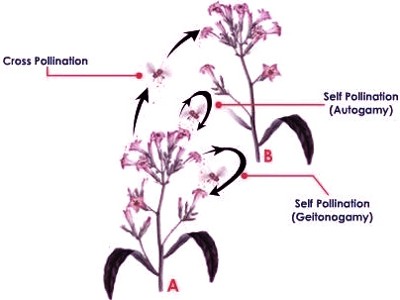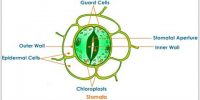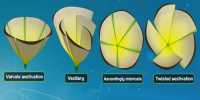Pollination takes two forms: self-pollination and cross-pollination. The procedure of transfers of pollen grains from anthers to the stigma of a flower, but when this procedure is between the flowers of the similar plant than the tenure is called self-pollination. It occurs when the pollen from the anther is deposited on the stigma of the similar flower, or another flower on the similar plant. And, when the transfers are between the flowers of the dissimilar plant of similar species is called cross-pollination. It is the transfer of pollen from the anther of one flower to the stigma of another flower on a dissimilar character of the similar species.
Differences between Self-pollination and Cross-pollination:
The inbreeding procedure in plants where pollens are transferred from the anthers to the stigma of similar flowers or another flower but of the similar plant.
- Self-pollination occurs in hereditarily similar plants. It occurs in the same flower or between two flowers of the same plant.
- Pollination usually occurs before blooming. It occurs in about ¼ of the flowering plant species.
- Does not need the presence of other plants of the same species nearby.
- Depends little on pollinating agents. So, there are no necessities of the pollinating agents.
- The purity of species preserved. Transfer of pollen grains to the stigma of the same flower or to the stigma of another flower of the same plant.
- No new variety develops. These plant species produce a limited amount of pollen.
- It occurs in perfect flowers only. These plants have small flowers.
Examples – Wheat, rice, pea, orchids, barley, tomatoes, peaches, apricot, etc.

The outbreeding procedure between the two plants of similar species and diverse flowers.
- Cross-pollination occurs in hereditarily diverse plants of the similar species. It occurs between two flowers of two different plants.
- Pollination occurs after blooming. It occurs in about ¾ of the flowering plant species.
- Needs the presence of other plants of the same species nearby.
- Depends completely on pollinating agents. External pollinating agents are essential like water, animals, wind, and insects.
- The purity of species is not preserved. Transfer of pollen grains from the anther of a flower to the stigma of another flower borne on a different plant.
- Possibilities of origin of new varieties. These plant species produce a large amount of pollen.
- It occurs in both imperfect and perfect flowers. These types have the scent, nectar and bright-colored petals.
Examples – Mulberry, maize, pumpkins, strawberries, blackberries, plums, grapes, daffodils, maple, catkins, grasses, etc.













